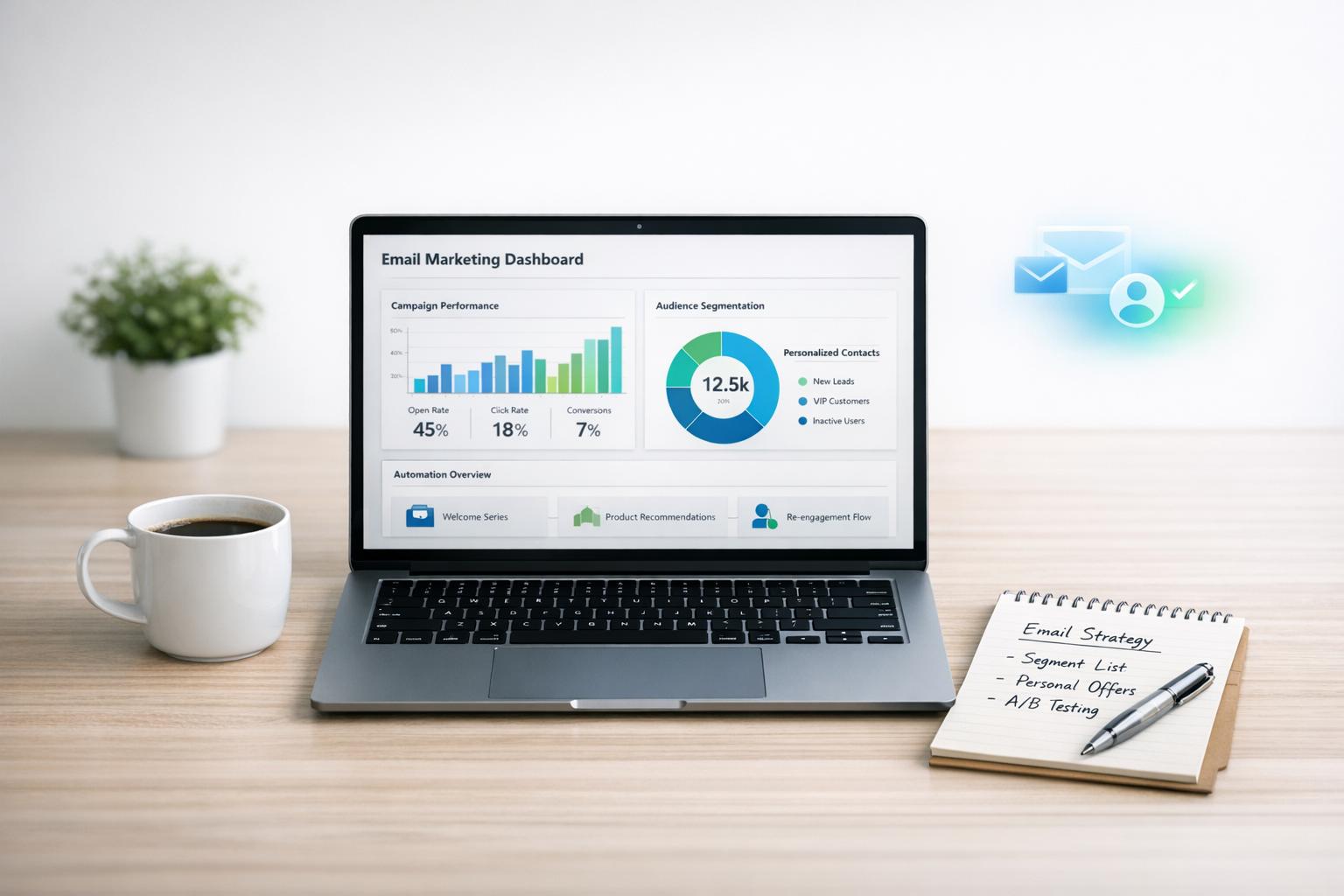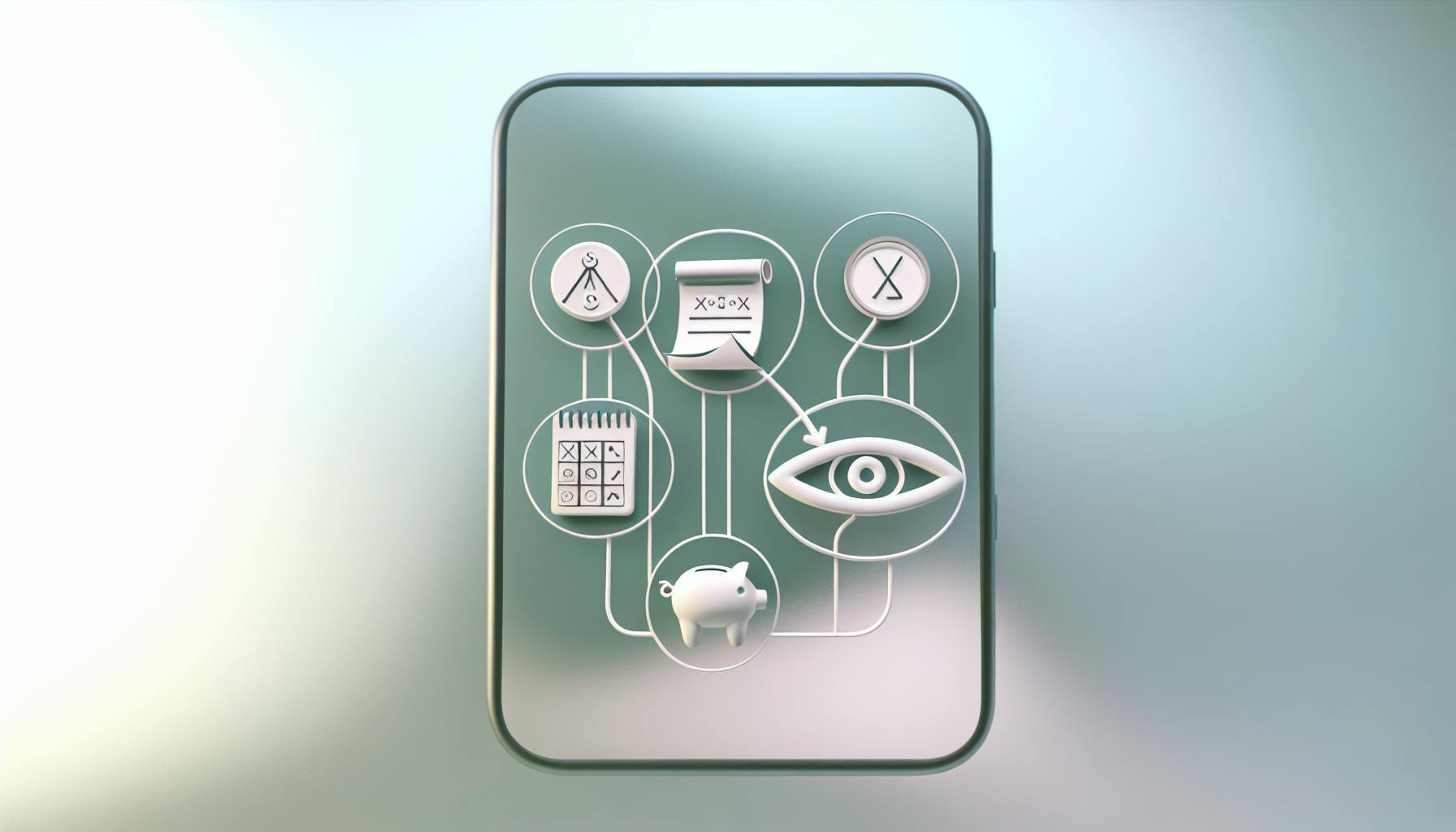As a business owner, finding the right accounting software is crucial, but with so many options it can feel overwhelming.
The good news is that by understanding key features like automation, integration, and scalability, you can confidently select software that aligns with your business goals and sets you up for long-term growth.
In this post, we'll compare top accounting platforms to help you make an informed decision. You'll learn how solutions like QuickBooks, Xero, and FreshBooks can empower your financial management through invoicing, payroll, compliance, inventory, and more.**
Navigating Financial Solutions with the Right Accounting Software
As a business owner, having the right accounting software in place is crucial for managing finances, tracking expenses, preparing taxes, and making data-driven decisions. This overview examines key features to consider when selecting accounting software tailored to small business needs.
Understanding the Role of Accounting Software in Cash Flow Management
Accounting software helps business owners maintain a healthy cash flow and manage financial risks in several key ways:
- Automating invoicing and tracking accounts receivable ensures timely payments and reliable cash inflow forecasts. Features like recurring invoices and payment reminders safeguard cash flow.
- Expenses and accounts payable tracking prevents late fees and maintains vendor relationships. Control when and how bills get paid based on cash availability.
- Detailed financial reports provide real-time visibility into cash flow positioning. Dashboard summaries help identify low points during the month or year to plan ahead.
- Some software integrates with bank accounts for automated reconciliation. This saves time while reducing accounting errors that could impact cash flow analysis.
The Benefits of Automating Payroll Management
Automated payroll management through accounting software has several notable benefits:
- Calculates local, state, and federal tax withholdings automatically based on latest regulations. Removes error-prone manual calculations.
- Flexible pay schedules help manage cash flow. Pay employees weekly, bi-weekly, semi-monthly, or other cadences based on cash inflows.
- Automatic filings of forms like W-2s and 1099s simplify reporting at tax time. Proper documentation also reduces audit risk.
- Some systems offer direct deposit, allowing fast, secure payroll distribution which employees appreciate.
- Reporting insights help make decisions on hiring, raises, and benefits based on payroll costs over time.
Evaluating CRM Integration for a Client-Centric Approach
Integrating customer relationship management (CRM) capabilities within accounting platforms fosters better client relationships and competitive intelligence:
- Centralized access to client profiles, communications history, and transaction data enables personalized service.
- Insights like purchase history and account status help tailor offers and strengthen engagement.
- Activity tracking features help gauge client sentiment to identify upsell opportunities or issues requiring attention.
- Automatic logging of all client interactions creates helpful documentation that any team member can leverage.
Considering Scalability for Growing Enterprises
As a business evolves, the right accounting software grows along with it by offering:
Flexible plans - Upgrade seamlessly to add users and access more features as needed. Ensures software can expand with business.
Custom roles and permissions - Grant access and functionality based on user needs as team expands.
Ability to handle large transaction volumes - Software remains responsive and accessible as invoice and payment volume increases over time.
Add-on capabilities - Integration with complementary systems for CRM, inventory management, etc as business complexity increases.
Budgeting for Financial Independence
To accurately budget for accounting software costs long-term and achieve financial independence:
- Compare monthly fees across solutions with the required feature sets. Consider potential discounts for annual subscriptions.
- Factor in one-time setup, migration, and training costs during initial rollout.
- Evaluate the cost of customer support. Options range from limited email access to 24/7 live assistance.
- Review if transaction fees apply for bank reconciliations, accepting payments, tax e-filings etc. These can add up over time.
- Confirm pricing remains consistent month-to-month without sudden cost increases down the road.
Assessing Key Features and Benefits of Accounting Software
When evaluating accounting software for your business, it's important to dig into the core features and functionality to determine how well they align with your specific needs and objectives. Having the right tools in place can streamline critical financial processes, provide real-time visibility into the health of your business, and set you up for scalable growth over time.
Automated Invoicing: A Path to Efficient Billing
Automating the invoicing process can save considerable time and effort while ensuring accuracy and prompt payment. Key features to evaluate include:
- Customizable invoice templates to maintain brand consistency
- Flexible recurring billing options on weekly, monthly or custom schedules
- Payment reminders and tracking to reduce late payments
- Integration with payment gateways to easily accept credit cards
- Automatic sync with accounting software to simplify reconciliation
Opting for automated invoicing streamlines accounts receivable and makes it easier to get paid on time. This helps improve cash flow, which is crucial for any business owner looking to effectively manage finances.
Streamlined Expense Tracking for Financial Clarity
Comprehensive expense tracking features enable real-time visibility into where money is being spent in your business. Prioritize software that offers:
- Mobile receipt capture to instantly log expenses
- Categorization of expenses for reporting by type
- Easy splitting of expenses across departments
- Mileage tracking for vehicle expense reporting
- Direct sync with bank accounts for matched transactions
With streamlined expense tracking, business owners can clearly see their true net profit and make informed decisions accordingly. This level of financial transparency is invaluable.
Inventory Management Solutions for Product-Based Businesses
For business owners in product-based industries, having inventory management capabilities integrated with accounting can be a major advantage. Look for features like:
- Real-time tracking of stock levels across locations
- Automated purchase order generation
- Low stock alerts to optimize reorders
- Detailed reporting on profit margins by product
Robust inventory management tools provide actionable insights to help business owners maximize sales and maintain optimal stock levels to meet demand. This is especially useful for avoiding costly out-of-stocks.
Simplifying Payroll: The Power of Payroll Management Features
Handling payroll administration can quickly become complex and time consuming as your business grows. Seek out software that offers:
- Easy employee setup with custom pay rates and schedules
- Automated federal and state tax calculations
- Direct deposit for fast, secure payroll delivery
- Accessible pay stubs for easy employee reference
When payroll tasks are simplified through automation, business owners regain time and avoid potential penalties for non-compliance. This is an invaluable support resource for any business with employees.
Tax Compliance and Planning Made Easy
Navigating business tax obligations can represent significant risk if not handled properly. Prioritizing software with built-in support can make all the difference. Consider features like:
- Automatic sales tax calculations on invoices
- Reminders for quarterly tax payments
- Easy tax form documentation and filing
- Projections for end-of-year tax liabilities
With automated assistance for various tax workflows, business owners can be confident they are fully compliant and ready for tax season. This removes major administrative burdens so you can stay focused on core priorities.
sbb-itb-d1a6c90
Comparing Top Accounting Software Options for Small Businesses
With an understanding of must-have features, compare leading platforms like QuickBooks, Xero, Sage, Wave and others based on costs, functionality, and business-specific needs.
QuickBooks: A Comprehensive Financial Solution for Small Businesses
As the most widely-used small business accounting software, QuickBooks offers robust core features paired with strong third-party app support. QuickBooks provides a full suite of accounting tools including invoicing, expense tracking, inventory management, and reporting. Key features like automated bank feeds, mobile apps, and integration with other business software make QuickBooks a convenient for business owners.
With various pricing tiers based on number of users and functionality needs, QuickBooks suits solo entrepreneurs to growing companies. However, the extensive feature set comes with a learning curve. Less tech-savvy users may find the interface overwhelming initially.
Xero: Supporting Business Growth with Real-Time Data
Xero makes a strong case for scaling businesses with its emphasis on collaboration and real-time dashboard visibility. Key strengths include connecting data flows across sales, inventory, and payments. For business owners focused on understanding cash flow and expenses, Xero provides valuable financial insights.
However, Xero lacks some of the advanced accounting capabilities larger organizations need. And the subscription plans get expensive for larger teams. But for real-time financial reporting and seamless integration with other platforms, Xero is a standout choice.
Sage Accounting: Advanced Features for Strategic Financial Management
Sage Intacct and Sage 50c offer advanced accounting capabilities oriented toward financial planning and analysis. With customizable dashboards and reporting, business owners can generate the specific financial statements they need. Support for complex multi-entity and global consolidations also make Sage solutions suitable for larger businesses.
However, Sage products involve more complexity with steeper learning curves. And the core platforms lack some convenience features like automated bank feeds. But for larger companies needing strategic accounting tools, Sage brings enterprise-grade capabilities.
Wave Accounting: Free Tools for Basic Accounting Needs
Wave provides free financial software covering invoicing, payments, and payroll paired with affordable live bookkeeping services. For bootstrapped startups and simple small business needs, Wave delivers capable accounting basics for business owners without the recurring fees.
However, Wave lacks some convenience features and customization available in paid platforms. And the free product serves more as a gateway to sell live bookkeeping services. But solopreneurs and very small teams can benefit from Wave's free financial foundations.
FreshBooks: Streamlined Accounting for Entrepreneurs and Small Teams
FreshBooks caters to solopreneurs and small teams through intuitive, automated accounting workflows with flat-rate pricing. Key strengths include excellent invoice customization, automated late payment reminders, and project profitability reporting. These features help business owners save time while optimizing accounts receivable.
However, FreshBooks trails platforms like QuickBooks and Xero in supporting larger teams and advanced accounting needs. And third-party app integration remains limited. But for freelancers and very small businesses seeking basic bookkeeping automation, FreshBooks provides an affordable solution.
Making an Informed Decision: How to Evaluate Accounting Software
Use these best practices to objectively contrast accounting platforms during your software selection process.
Aligning Features with Business Goals for Strategic Advantage
When evaluating accounting software, it's important to start by clearly defining your business goals and outlining the key features that will enable you to achieve them. This strategic approach allows you to objectively assess how well each platform aligns with your current and future needs.
Begin by creating a checklist of must-have capabilities based on your growth objectives, such as:
- Automating core accounting tasks like invoicing, expense tracking, and reporting
- Streamlining payroll, taxes, and compliance workflows
- Enabling sales order and inventory management
- Providing insights through real-time financial dashboards
- Integrating with other business apps
Then, rank the accounting solutions under consideration by how comprehensively they deliver on these prioritized functionalities. This goal alignment analysis will reveal which platform offers the best fit.
Platforms tailored for small business owners often excel at automating everyday accounting workflows, while enterprise-geared solutions offer robust analytics and customization. Carefully weigh these strategic advantages against costs.
The Importance of Integrations in a Connected Business Environment
Given today's emphasis on software ecosystems, assessing integration capabilities is a key part of any accounting platform evaluation.
Determine which complementary apps are essential to your sales, marketing, ecommerce, and other workflows. Then verify which accounting systems enable seamless connectivity to these solutions for efficient data flows.
Ideally, the platform should integrate with apps like:
- CRM software
- Ecommerce platforms
- Business intelligence tools
- Payroll providers
- Banking services
This unified connectivity empowers more informed business decisions by centralizing financial data flows.
Hands-On Free Trials: Testing Software in Real-World Scenarios
Rather than relying solely on vendor demos, free trials allow first-hand experience using accounting platforms with real workflows and data.
Set up a trial account and conduct your most frequent accounting tasks, such as:
- Generating invoices
- Processing payments
- Managing expenses
- Running financial reports
Testing with real-world scenarios provides greater insight into usability, flexibility, and feature optimization. Bring your own data for maximum relevance.
If the software proves cumbersome for daily tasks or lacks integration with essential apps, these limitations will be clearly exposed before purchase.
Transparent Pricing Models: Ensuring Long-Term Affordability
An accounting solution may offer compelling capabilities, but that value is diminished if unpredictable price hikes make it unaffordable.
When comparing platforms, carefully analyze:
- Service fees
- Support costs
- Available edition tiers
- Discount opportunities
- Contract terms
Project these expenses over a 3-5 year timeline to accurately weigh long-term costs against features.
Opt for simple, transparent pricing with caps on support fees. Month-to-month contracts allow easier adjustments as needs evolve.
Customer Reviews and Case Studies: Learning from Others' Experiences
Independent user experiences reveal how accounting software performs for diverse real-world businesses.
Seek out candid customer reviews across multiple sites and read case studies covering companies similar to yours. Key insights include:
- Ease of getting started
- Ongoing usability feedback
- Feature wish lists
- Integration experiences
- Support satisfaction
This community wisdom highlights shortcomings and advantages that specifications alone may not reveal.
Let these real-world perspectives guide your purchasing decision toward the best-fit accounting platform for current and future success. Align features with strategic goals, verify platform integrations, test usability with trials, analyze transparent pricing, and learn from experiences of others through reviews and case studies. This diligence ensures you select software that flexibly scales as your business evolves.
Conclusion: Empowering Business Owners with the Right Accounting Software
Choosing accounting software tailored to your business needs and budget is crucial for growth. Define must-have capabilities, thoroughly compare leading options, and leverage free trials to determine the best platform.
Recap of Essential Considerations for Selecting Accounting Software
When evaluating accounting software, key factors for business owners to consider include:
- Core features: Ensure the software has essential financial management capabilities like invoicing, expense tracking, financial reporting, and inventory management. Consider special features like payroll, tax preparation, or CRM depending on your needs.
- Ease of use: The platform should have an intuitive, user-friendly interface so you and your team can quickly learn and efficiently use it daily. Complex software with a steep learning curve will hamper productivity.
- Scalability: As your business grows, the software should be able to scale capabilities and number of user licenses to match your evolving needs.
- Data security: Cloud-based accounting platforms should have robust security protections, backups, and data encryption to safeguard your financial data.
- Customer support: Factor in the availability and responsiveness of customer service channels in case questions or issues arise.
- Budget: Carefully compare pricing models (one-time license, monthly/annual subscriptions) to find an affordable solution tailored for small businesses.
Final Software Recommendations for Small Business Success
Based on the above criteria, two top accounting solutions to consider for streamlining finances are Xero and QuickBooks Online.
Xero stands out for its user-friendly interface, extensive reporting, seamless bank integrations, and strong customer support. QuickBooks Online is also highly capable for small business accounting needs like invoicing and inventory control. Both offer comprehensive core features, flexible pricing tiers, and free trial options to experience firsthand.
Implementing Your Choice: Steps Toward Financial Mastery
Once you’ve selected the right accounting software for your small business, follow these best practices for a successful implementation:
- Thoroughly test key workflows during the free trial period. Understand capabilities and identify any need for customization.
- Migrate historical financial data from other accounting systems for consolidated reporting.
- Train staff on using the software through available learning resources like video tutorials and knowledge bases.
- Establish rules, workflows and access permissions for financial controls and streamlined collaboration.
- Integrate bank accounts and credit cards for automated syncing of transactions.
- Consult customer support channels for guidance in leveraging all relevant capabilities.
With the proper accounting software in place, you’ll be empowered to master your finances, unlock business insights, and pursue growth with confidence.


